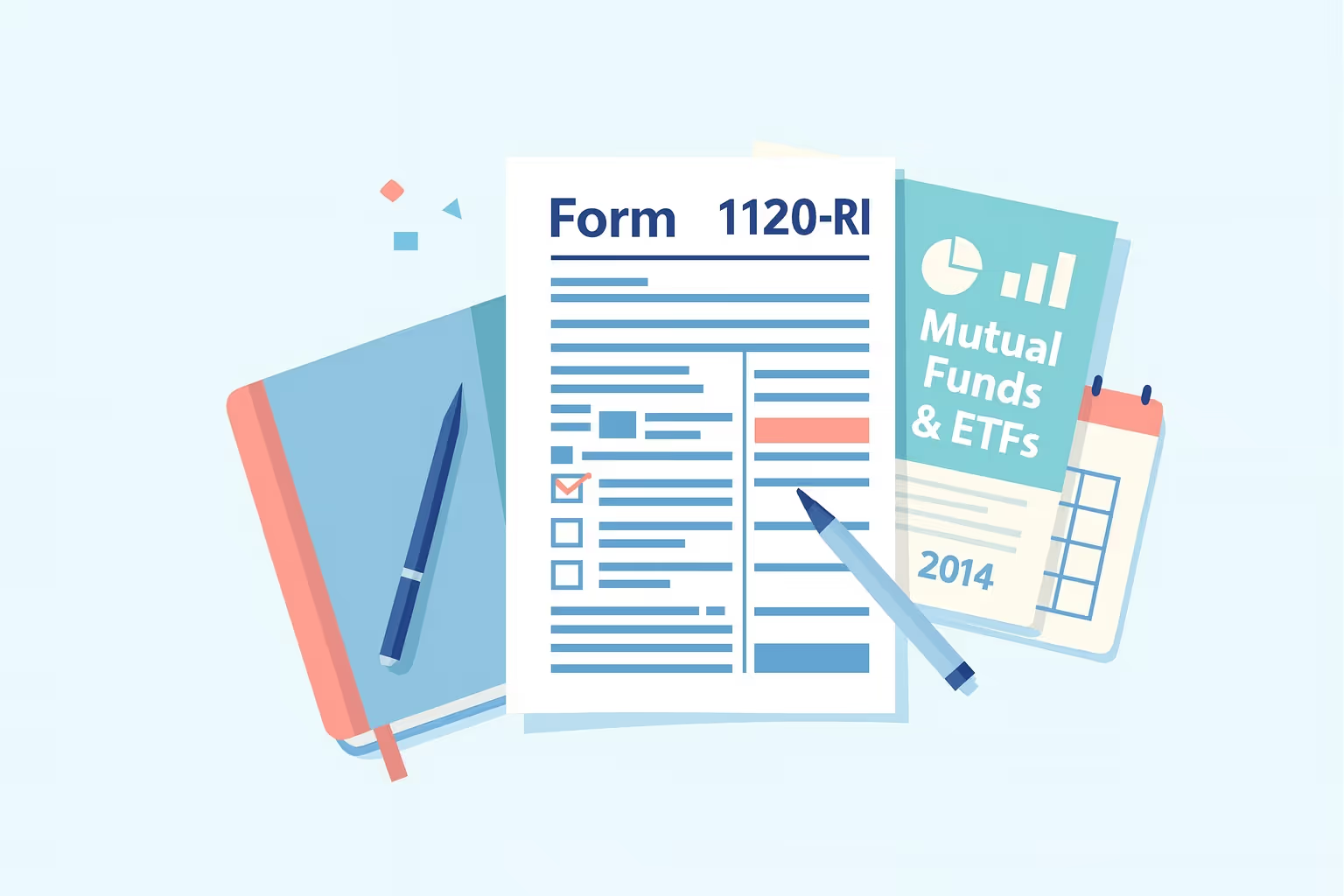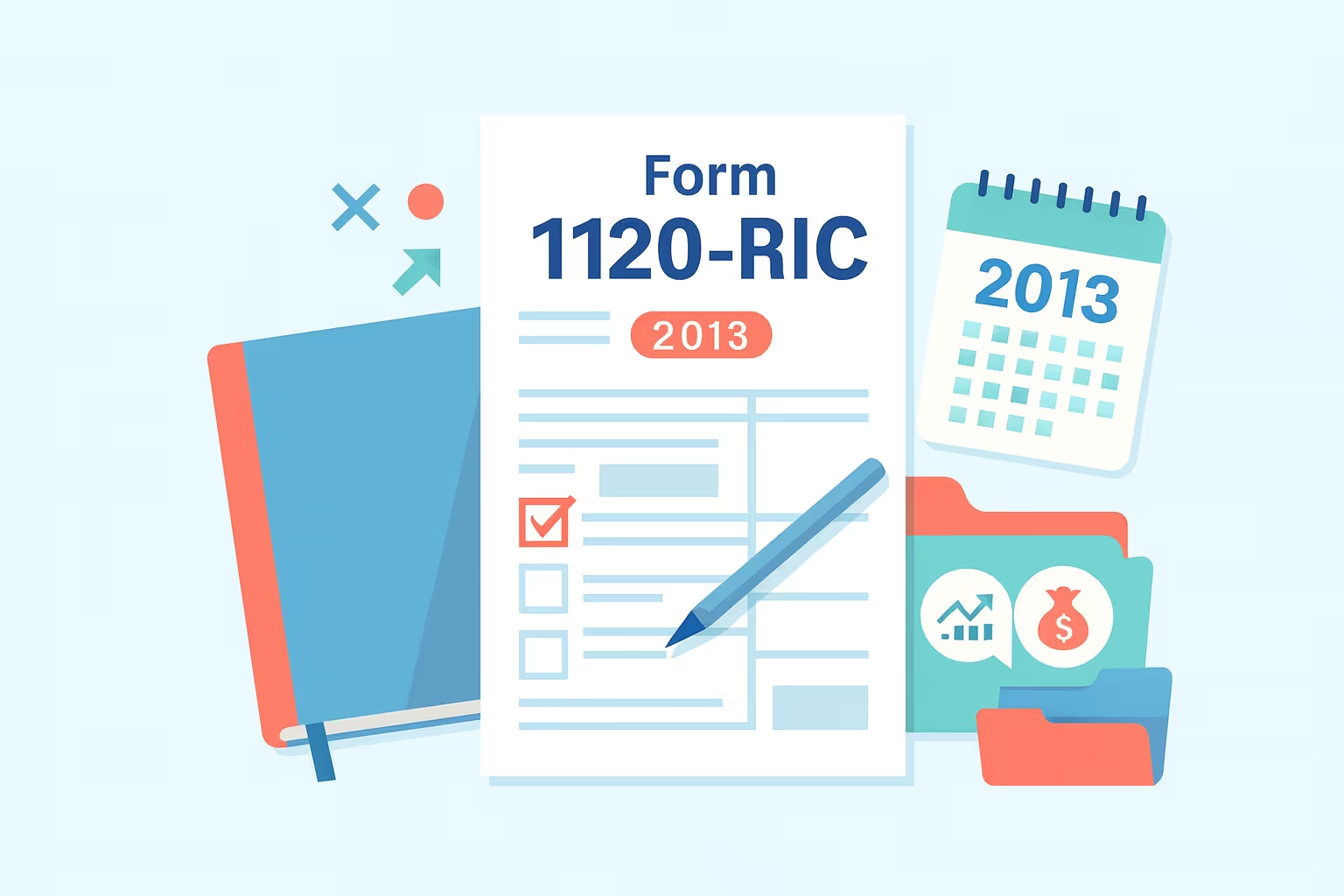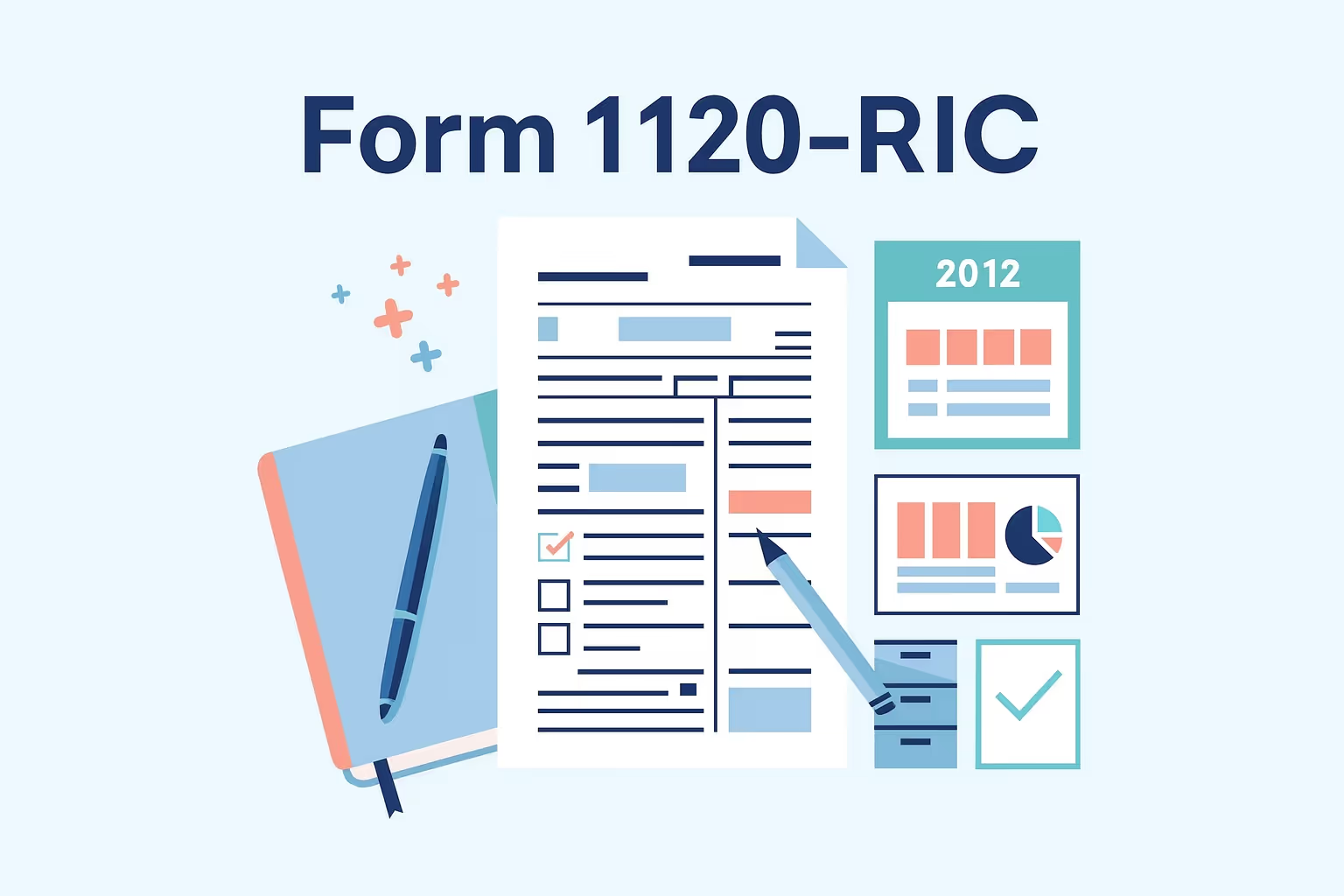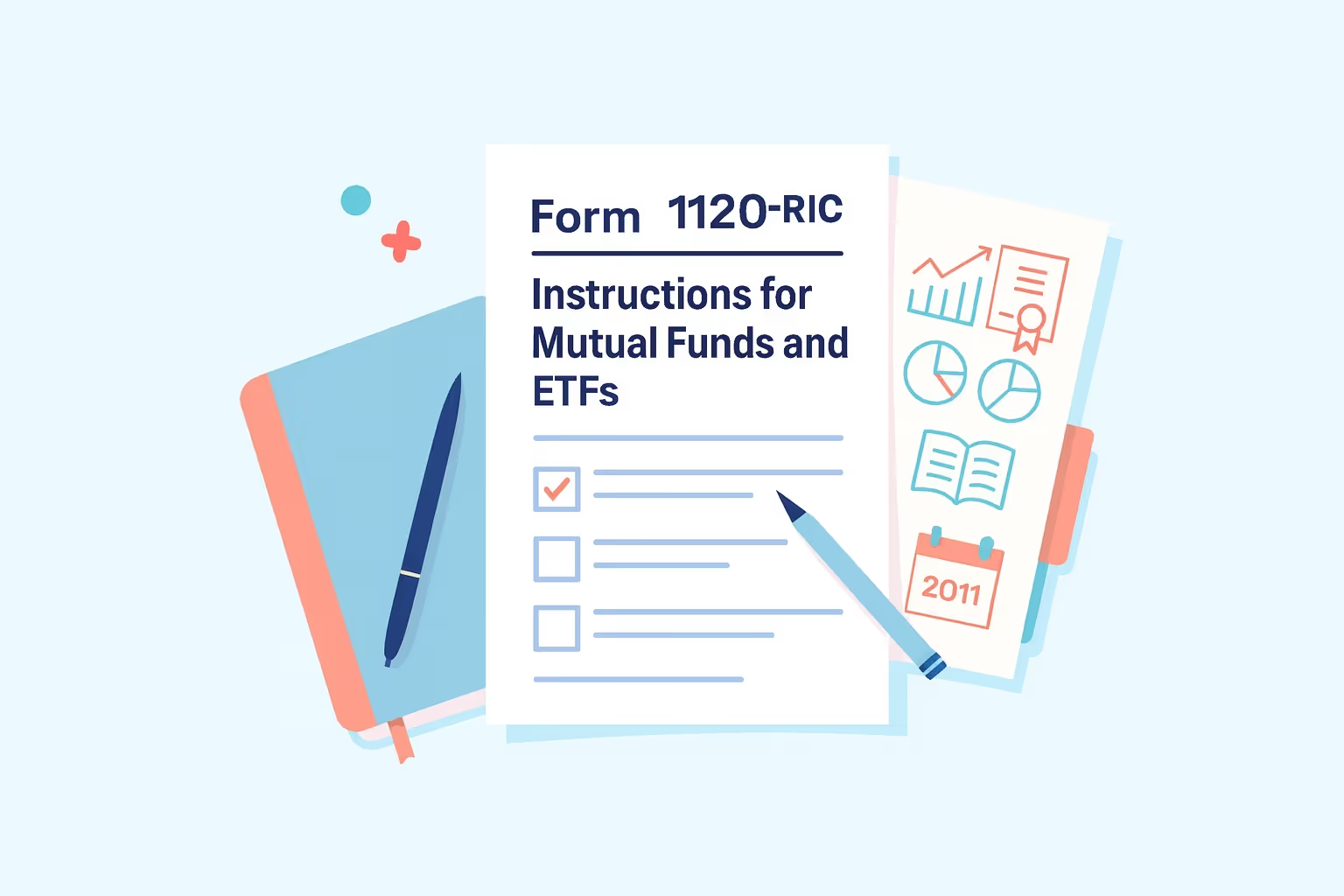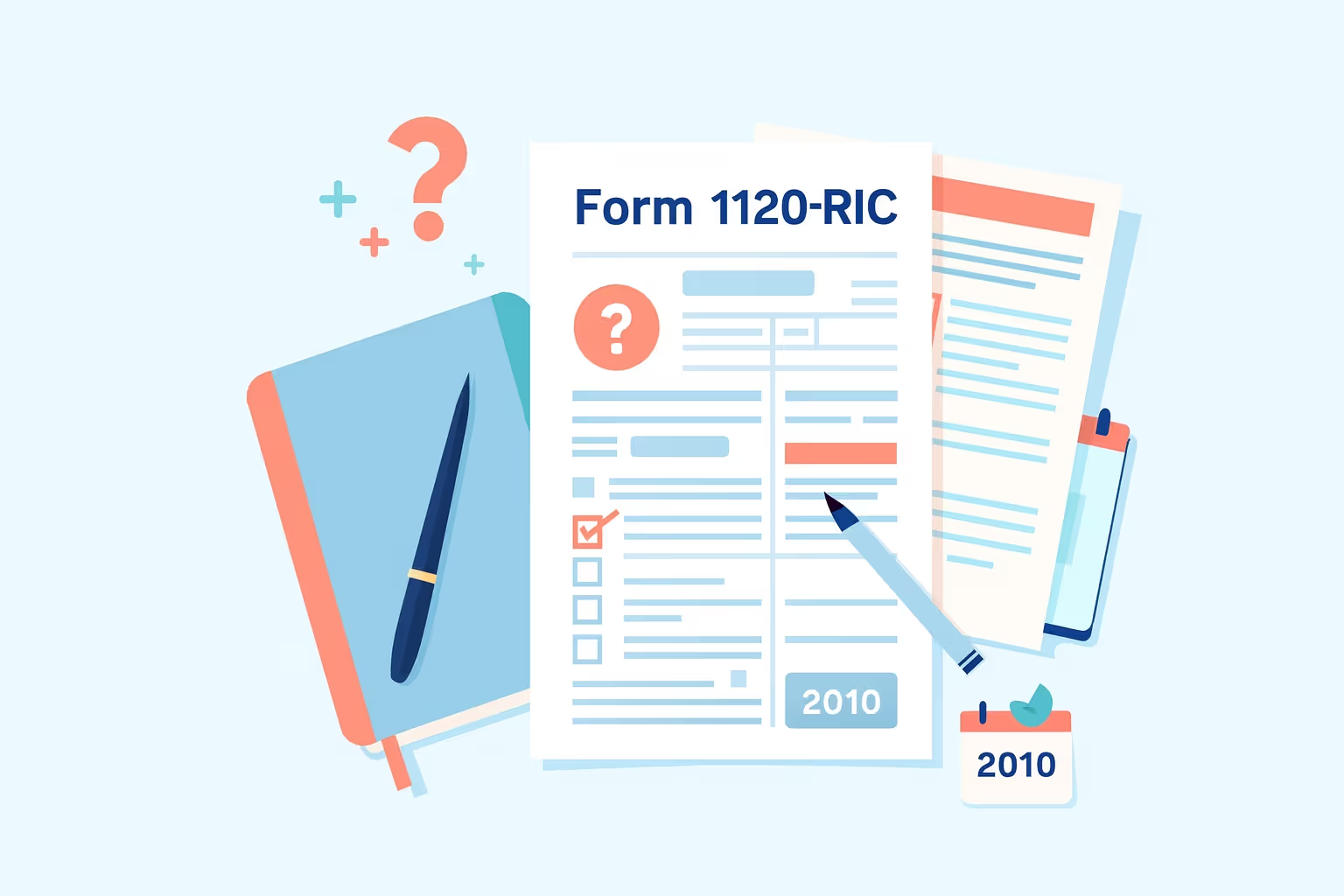
What IRS Form 1120-RIC (2022) Is For
IRS Form 1120-RIC 2022 is the official income tax return for regulated investment companies such as mutual funds, exchange-traded funds, and unit investment trusts. These entities file the form to report income, deductions, gains, and credits to the Internal Revenue Service under the Internal Revenue Code. A domestic corporation that qualifies under the Investment Company Act and elects RIC status must use this form to meet its federal taxation obligations, document dividends paid, and calculate investment company taxable income for the tax year. It also ensures compliance with distribution requirements that allow income to pass through to individual and corporate shareholders rather than being taxed at the corporate level.
For a detailed breakdown of filing requirements, eligibility rules, and step-by-step instructions, see our guide on How to File Federal Form 1120-RIC for Tax Year 2022
When You’d Use IRS Form 1120-RIC (2022)
This form applies to any regulated investment company that has taxable income, pays dividends, or must reconcile prior filings. It reports income, files late or amended returns, and corrects prior distribution or qualification errors. Late filings occur when a company misses the due date or needs to adjust dividends paid and other income. Amended returns ensure that the investment company reports its taxable income, net investment income, and deductions correctly while following the rules of the Securities and Exchange Commission and the IRS.
Key Rules or Details for 2022
- A regulated investment company filing a RIC tax return must include all gross income sources, such as dividends, interest, and securities gains, to satisfy the 90% qualifying income test.
- The minimum late filing penalty increased to $450 for returns more than 60 days past the due date, or the smaller of that amount and the tax due.
- Certain RICs could claim credits for tax credit bonds in 2022, reducing overall income tax liability and increasing investor distributions.
- Short- and long-term capital gain dividends must be clearly reported to prevent reclassification errors.
- Excise tax filings on undistributed income using Form 8613 must align with the same calendar year as the RIC’s main income tax return.
- Under the updated instructions, the IRS emphasized maintaining supporting documentation for total assets, securities loans, dividends received, deductions, and all related expenses.
Step-by-Step (High Level)
Step 1: Gather Financial Records and Transcripts
Collect investment data, distribution reports, and expense details for the taxable year. These ensure that gross income, taxable income, and total assets are accurately reflected in the return.
Step 2: Complete the RIC Tax Return
Use the official IRS Form 1120-RIC for the correct tax year and follow instructions closely. Include all relevant income, deductions, and credits under the Internal Revenue Code.
Step 3: Attach Required Schedules
Attach Schedule A for dividends paid and Schedule K for other information, along with supporting documentation for securities loans, tax credit bonds, and excise tax filings when applicable.
Step 4: File the Income Tax Return
Submit the return by mail or through the IRS’s e-file system. Verify that the corporation’s RIC election remains valid and that all required officer signatures are present.
Step 5: Retain Supporting Documentation
Keep copies of the filed income tax return, related IRS forms, and proof of payments for at least three years to verify compliance and assist in future audits.
Learn more about federal tax filing through our IRS Form Help Center
Common Mistakes and How to Avoid Them
- Incorrect income calculations: Some investment companies omit certain income sources, like interest or gains. Always confirm that 90% of gross income meets qualifying standards under the Internal Revenue Code.
- Misreporting distributions: Improper classification of ordinary, exempt interest, or capital gain dividends may affect taxable income. Review calculations to preserve RIC status.
- Excise tax oversights: Failing to file Form 8613 on undistributed income can result in a 4% penalty. Coordinate excise tax deadlines with annual filing schedules.
- Unsupported deductions: To avoid IRS challenges or audits, deductions for expenses, interest, and dividends received must be backed by complete records.
- RIC election errors: A missed or incomplete RIC election removes pass-through benefits. File amended returns within six months, labeled “Filed pursuant to section 301.9100-2” if corrections are required.
- Recordkeeping failures: Keep accurate documentation for dividends paid, cash distributions, and investment expenses to confirm compliance with distribution requirements.
What Happens After You File
After submission, the IRS reviews Form 1120-RIC for accuracy and compliance. Processing can take several weeks or months, depending on the complexity of the investment company’s assets. Entities may receive acknowledgment notices or requests for additional documentation. Payments can be made electronically through EFTPS or by wire transfer. The IRS will issue notices for clarification if adjustments or excise tax assessments occur. RICs may appeal assessments through the IRS Independent Office of Appeals. Interest continues to accrue on unpaid balances until full payment is made.
FAQs
What is the purpose of IRS Form 1120-RIC U.S. Income Tax Return?
The official return for regulated investment companies is to report taxable income, deductions, dividends paid, and other income under the Internal Revenue Code.
How do distribution requirements affect a RIC Tax Return?
Distribution requirements ensure that a regulated investment company distributes at least 90% of its investment company taxable income and exempt interest dividends to shareholders each taxable year.
What is the due date for filing a Return for Regulated Investment Companies?
The due date is the 15th day of the 4th month following the end of the taxable year, or the 3rd month for entities with a June 30 fiscal year.
What happens if I miss the excise tax filing deadline?
Missing the deadline for Form 8613 results in a 4% excise tax on undistributed income, increasing total income tax liability and reducing available earnings.
How do I verify my entity’s RIC status?
A corporation qualifies as a regulated investment company if it meets all income, asset, and distribution requirements under the Internal Revenue Code and maintains filings with the Securities and Exchange Commission.
What is the correct process for an RIC election?
A domestic corporation must file its RIC election with its first income tax return as a regulated investment company and include statements confirming compliance with the Investment Company Act.
How does gross income affect Form 1120-RIC reporting?
Gross income determines whether the 90% qualifying income test is met. Accurate reporting of dividends, gains, and interest ensures that the RIC maintains its qualified status for the tax year.
For more resources on filing or understanding prior-year IRS forms, visit IRS Form 1120-RIC: Regulated Investment Company Tax Return Guide.

























